| View previous topic :: View next topic |
| Author |
Message |
Elise

Joined: 22 Dec 2009
Posts: 243
Location: New York State



|
 Posted: Nov 14, 2012 12:10 Post subject: A growth conundrum Posted: Nov 14, 2012 12:10 Post subject: A growth conundrum |
|
|
Hi,
This is one of a pair of specimens which fascinates me - the crystals grew in curved layers and sometimes at right angles to each other. There is a lot of iron ( ? ) staining, but many sections show beautiful glassy crystals, mostly flattened, but I can't figure out the habit (I think there are several).
I'd welcome any thoughts about this - the locality, how it grew, any references. The museum label reads" Quartz, Hot Springs, Arkansas, Donated in memory of Allan Gibbs". This one measures approx. 28 x 22 x 16 cm. It is quite difficult to take photos of, including choosing what parts to highlight - it is ALL interesting! I had shown it to Jeff Scovil when he was visiting this past summer and wished I could have had him image it; my efforts are below.
Cheers!
Elise
| Description: |
| Label: "Quartz, Hot Springs, Arkansas, Donated in memory of Allan Gibbs". approx. 28 x 22 x 16 cm. |
|
| Viewed: |
11153 Time(s) |
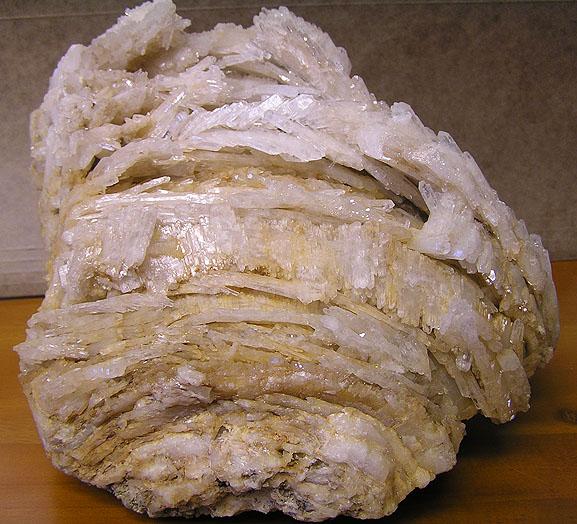
|
| Description: |
|
| Viewed: |
11154 Time(s) |
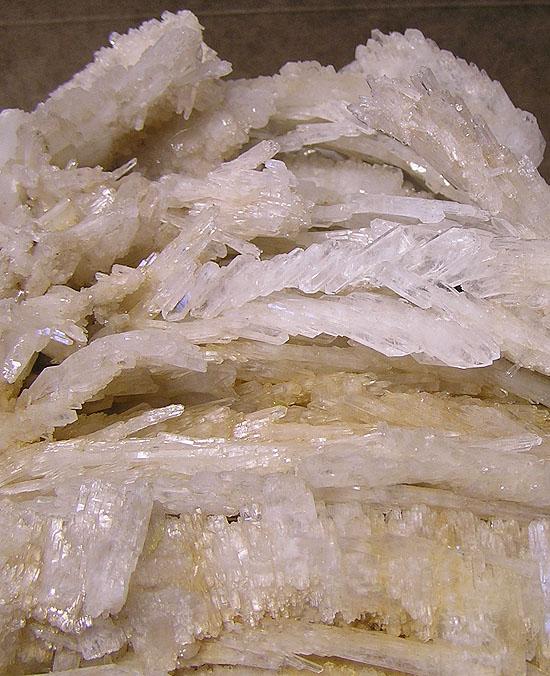
|
| Description: |
|
| Viewed: |
11170 Time(s) |
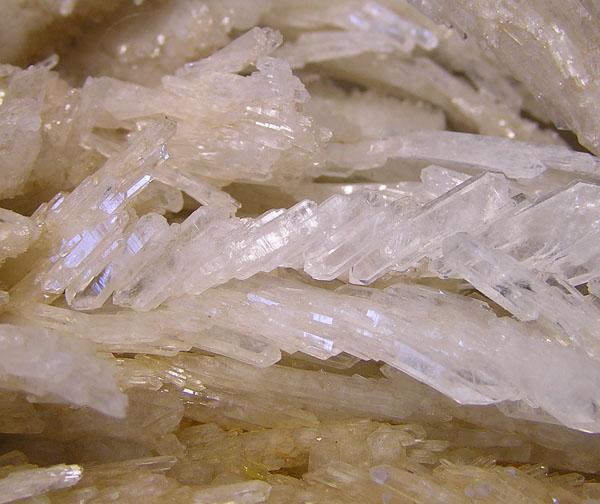
|
| Description: |
|
| Viewed: |
11156 Time(s) |
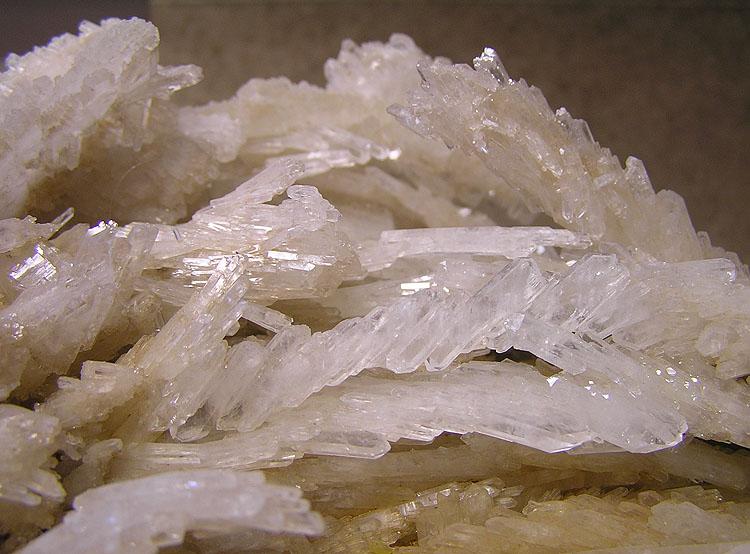
|
| Description: |
|
| Viewed: |
11144 Time(s) |
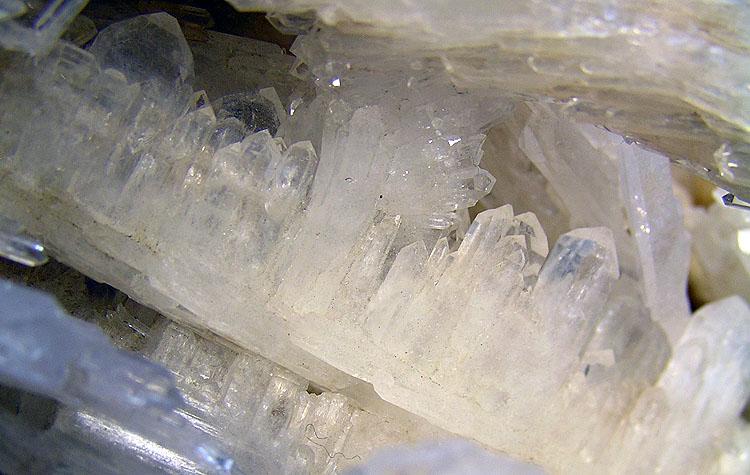
|
| Description: |
|
| Viewed: |
11189 Time(s) |
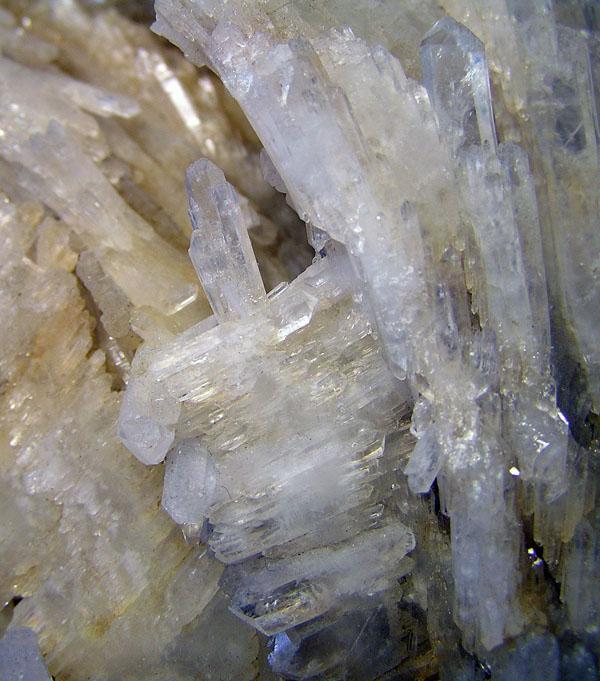
|
| Description: |
|
| Viewed: |
11141 Time(s) |
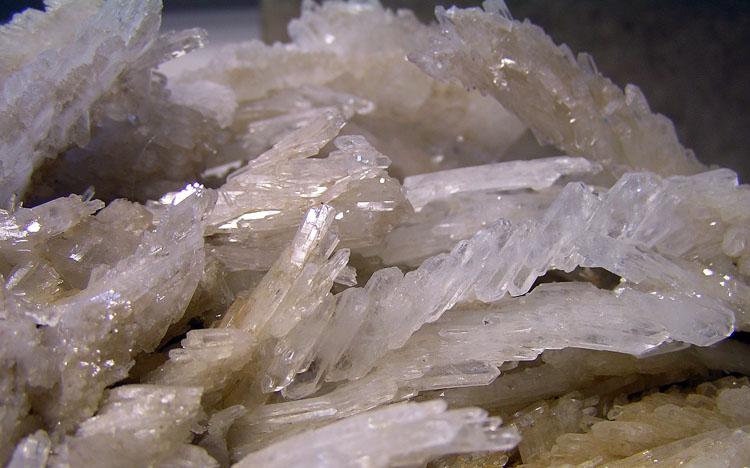
|
| Description: |
|
| Viewed: |
11151 Time(s) |
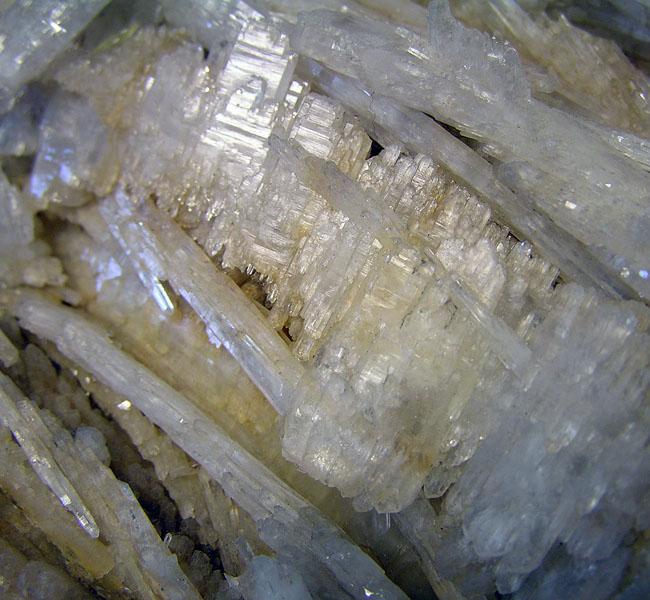
|
_________________
Elise Skalwold |
|
| Back to top |
|
 |
Peter Megaw
Site Admin

Joined: 13 Jan 2007
Posts: 963
Location: Tucson, Arizona



|
 Posted: Nov 14, 2012 12:56 Post subject: Re: A growth conundrum Posted: Nov 14, 2012 12:56 Post subject: Re: A growth conundrum |
|
|
Looks like Jeffery Quarry "solution quartz" to me. there are folks out ther who know the geology of the place well. Really miss Art Smith right now...
_________________
Siempre Adelante! |
|
| Back to top |
|
 |
Elise

Joined: 22 Dec 2009
Posts: 243
Location: New York State



|
 Posted: Nov 14, 2012 13:14 Post subject: Re: A growth conundrum Posted: Nov 14, 2012 13:14 Post subject: Re: A growth conundrum |
|
|
Hi Peter,
Part of what is neat is that at first glance it looks as though the quartz crystals themselves are curved when in-fact they are straight. Regarding the areas of parallel growth, I wonder what tweak of Nature caused each one to be oriented slightly off in such a way that an arch is formed. And then there are the areas where crystals grew perpendicular to each other. It all alternates, so did conditions flip-flop over time? I had found the FMF thread on curved crystals, but nothing so far on this. I also looked through Amir's QuartzPage, but may have missed it as one gets easily distracted when exploring there.
https://www.mineral-forum.com/message-board/viewtopic.php?p=194
Elise
_________________
Elise Skalwold |
|
| Back to top |
|
 |
Pete Modreski
Site Admin

Joined: 30 Jul 2007
Posts: 709
Location: Denver, Colorado



|
 Posted: Nov 14, 2012 13:30 Post subject: Re: A growth conundrum Posted: Nov 14, 2012 13:30 Post subject: Re: A growth conundrum |
|
|
| I wonder if there could have been some kind of curved structure in the original host rock--perhaps even part of a fossil shell?--that was completely dissolved away and replaced by the quartz crystals, but guided the curved pattern of the layers of quartz...
|
|
| Back to top |
|
 |
John S. White
Site Admin

Joined: 04 Sep 2006
Posts: 1295
Location: Stewartstown, Pennsylvania, USA



|
 Posted: Nov 14, 2012 14:25 Post subject: Re: A growth conundrum Posted: Nov 14, 2012 14:25 Post subject: Re: A growth conundrum |
|
|
Hi Elise:
Great piece. I like Pete's suggestion but I am not sure that there are fossils in the host rock for that area. I have never encountered any, but there could be. Pete would be the perfect person to examine the geology to see if the rock could be fossil bearing. Apart from that, I have no idea how this could have formed, but it is a great piece.
_________________
John S. White
aka Rondinaire |
|
| Back to top |
|
 |
Elise

Joined: 22 Dec 2009
Posts: 243
Location: New York State



|
 Posted: Nov 14, 2012 15:00 Post subject: Re: A growth conundrum Posted: Nov 14, 2012 15:00 Post subject: Re: A growth conundrum |
|
|
Hi Pete and John,
I went back down the hall and took another photo for you of the other specimen to show what these crystals are growing on. The specimen shown in the photos above is on the right side of the image below and it is turned so you can see the back side of it. The specimen on the left is quite a bit heavier, so I didn't want to carry it back to my office to photograph.
You can see a curved spray of quartz crystals on the left side of this specimen with the darker, angular substrate in the middle and lower right - perhaps sandstone?. This latter is all covered with a quartz druzy and shows some big cracks, though seems solid (it isn't going to fall apart though it might have at one time - I think the quartz overgrowth is holding it together; large crystals are growing within some of the cracks). The quartz looks milky in this image, but that is just from the flash on the camera. Needless to say, like a porcupine, these are bit hard to handle.
Elise
| Description: |
Quartz
Hot Springs, Arkansas
22x26x20 cm |
|
| Viewed: |
11062 Time(s) |
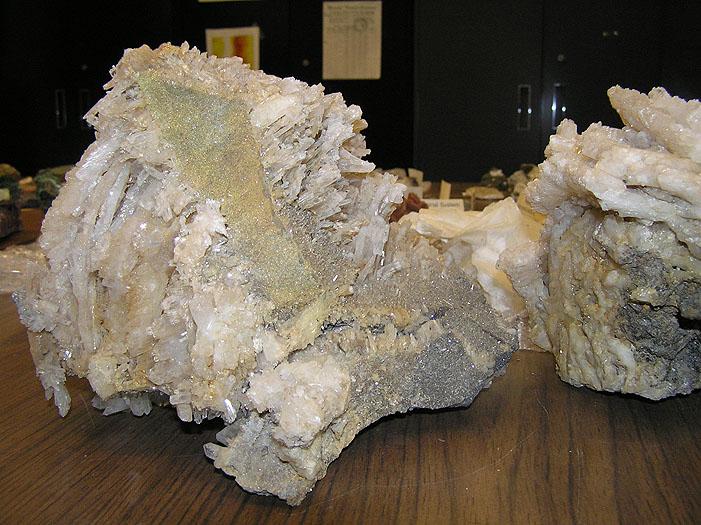
|
_________________
Elise Skalwold |
|
| Back to top |
|
 |
Chris Foltz
Joined: 28 Oct 2012
Posts: 92
Location: Maryland



|
 Posted: Nov 14, 2012 20:13 Post subject: Re: A growth conundrum Posted: Nov 14, 2012 20:13 Post subject: Re: A growth conundrum |
|
|
That is so cool :)
_________________
stone-cutter |
|
| Back to top |
|
 |
Pete Richards
Site Admin

Joined: 29 Dec 2008
Posts: 830
Location: Northeast Ohio



|
 Posted: Nov 14, 2012 21:25 Post subject: Re: A growth conundrum Posted: Nov 14, 2012 21:25 Post subject: Re: A growth conundrum |
|
|
I have to think this is an extremely unusual example of faden quartz. A faden (German for thread or string) forms when an individual grain in a rock gets broken and separated as a vein is opening due to tectonic stretching, but is able to heal by coherent deposition of new quartz to preserve crystallographic orientation. When this process is repeated multiple times as the vein continues to open, the original grain is converted into a crystallographically-coherent thread. The thread is later overgrown to form a faden crystal group, characterized by a milky thread (the faden) running through a batch of nearly-parallel growth crystals. In the usual case, faden aggregates are more or less planar, but if the tectonic distortion is rotational, they can be curved, and the curvature can be in any plane relative to the crystallography, because it is imposed by the tectonic movements, not the crystallography.
Usually examples of faden quartz are seen as isolated groups, but I have examples of vein faces with multiple parallel spires of faden quartz microcrystals, all with parallel orientation of the threads but with different orientations of the crystals attached to the thread. I.e. the orientation of the stretching/healing was consistent across the specimen but was random relative to the crystal structure of the individual grains/faden.
This specimen of Elise's seems to show a series of more or less parallel aggregates of crystals forming horizontal, curved bands. Each band has multiple quartz crystals that are parallel to each other, but crystals in different bands are differently oriented. I think the horizontal arrangement represents the parallel (but strongly bowed) configuration of the original faden or stretched-out grains. The different orientation of crystals within different bands reflects the random orientation of the original grains relative to the vein surface. I even think I can see the milky zones in the middle that represent the stretched and healed faden.
If this is a correct interpretation, it is a most remarkable specimen!
Whether such a thing should be expected in Hot Springs, Arkansas, I cannot say. I do believe faden quartz has been found in that area.
Most faden minerals are associated with alpine vein mineralization, but other tectonic processes, if gradual enough to allow healing of the faden, could also produce such textures, including gradual brecciation and mineralization in a non-alpine environment.
_________________
Collecting and studying crystals with interesting habits, twinning, and epitaxy |
|
| Back to top |
|
 |
Elise

Joined: 22 Dec 2009
Posts: 243
Location: New York State



|
 Posted: Nov 14, 2012 22:06 Post subject: Re: A growth conundrum Posted: Nov 14, 2012 22:06 Post subject: Re: A growth conundrum |
|
|
Hi Pete,
That was what I was hoping someone would comment on in the image "ark40" - The milky seam runs its length with a single crystal tail at the end. There are several layers like this which contrast with the ones which seem to be parallel growth with no such seam - "ark42" below that image - or maybe the seam is less visible, even microscopic. And then there are the layers of very different crystals shown in the last image "ark43" -almost lathe-like. I can try to image the seam better later in the week.
Elise
_________________
Elise Skalwold |
|
| Back to top |
|
 |
|


